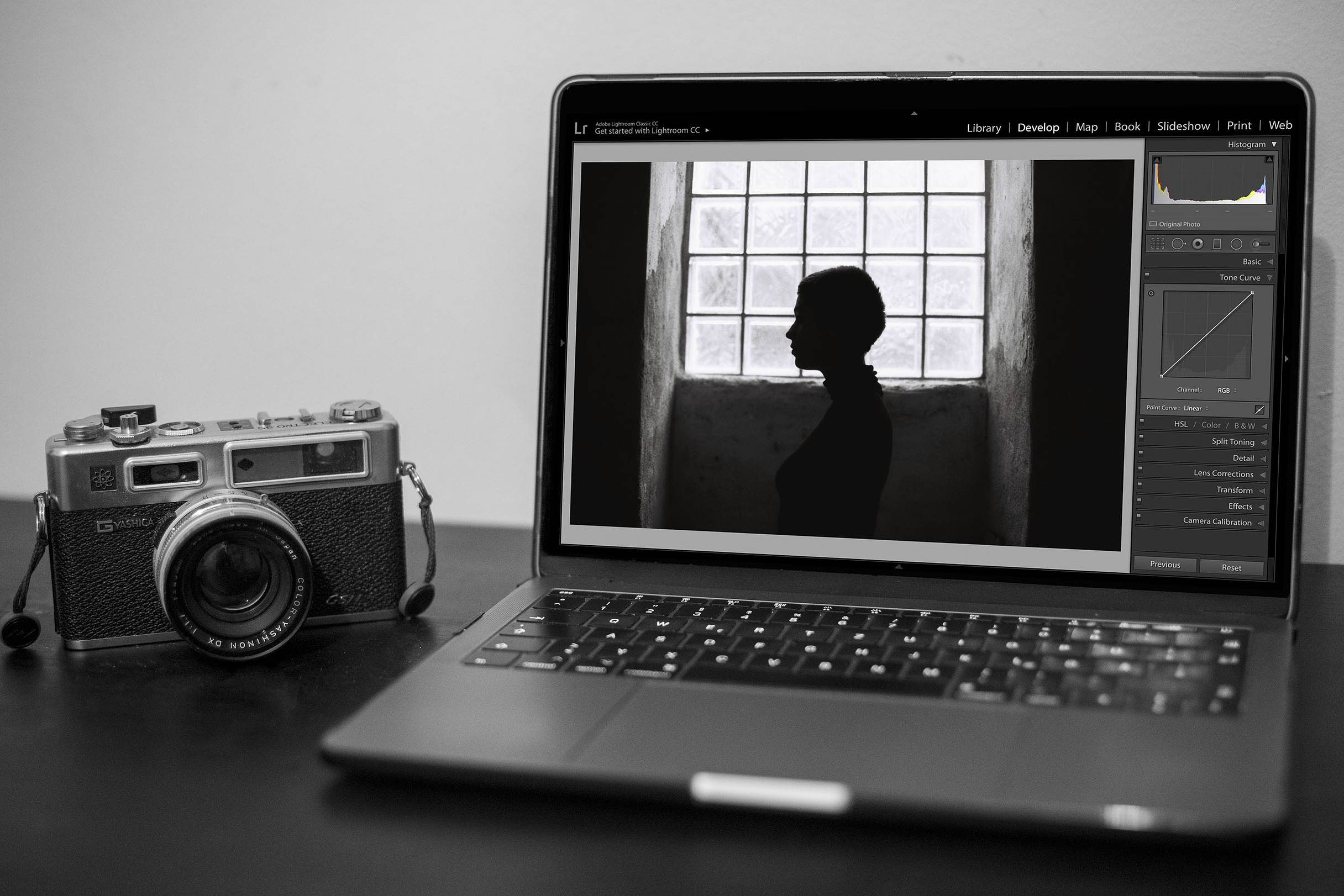Lomography Potsdam Kino B&W Cookbook
16 67Whether you’re an analogue amateur or a seasoned pro, embracing a new film can be a challenge. That's why we’ve carefully compiled our Potsdam Kino Cookbook! From snapping your first exposure to developing your negatives, we’ve got a recipe for every stage of the photographic process.

As part of the Kino Family, the Lomography Potsdam Kino B&W Film ISO 100 is inspired by vintage German film, originally designed for cinematography and filmmaking – thus it inherits many unique and beneficial qualities. This medium speed and triacetate-based film is made of a heavy silver halide composition that produces rich tones and great dynamic latitude, allowing for photographic flexibility. A noteworthy aspect of the Potsdam Kino film is its intended compatibility and outstanding performance when processed in reversal. Since it has a finer grain structure and is slower than its older brother Berlin Kino, Potsdam Kino is suited for scenarios that prioritize image quality over film speed. This makes it great for studio, landscape and architecture work.
Shooting
The Potsdam Kino is a classic panchromatic emulsion, meaning it captures all frequencies of light visible to the naked eye. This renders the world and your images in a classic monochrome look, with each color represented by a different shade of gray. Depending on the subject, environment or time of day, one might want to limit the colors captured in the image. This can easily be achieved with the use of photographic filters. They can dramatically change the look of an image – adding contrast, removing haze and shifting the tonal range. We recommend a red filter for landscapes and green for portraits. Take a look at our tests with different filters below!
Light is either a photographer's best friend or worst enemy. Thankfully, due to its wide chromatic range, the Potsdam Kino B&W film works in a variety of lighting conditions. When shooting in monochromatic lighting scenarios such as under tungsten or fluorescent light, we advise slightly overexposing your shots in order to compensate for the lack of tonal range. You can also try whipping out your flash to splash the full tonal range across your scene.
Developing
We recommend developing this emotive emulsion at home for the best results and the greatest degree of control. After all, nothing compares to the magic of developing your own photographs and watching your masterpieces come to life at the tip of your fingers. So if you’re devoted to bringing the black and white magic at home, this is the guide for you!
Just like emulsions, no two developers are alike. Here are our favorite developers and their effect on your images.
Kodak HC-110
Kodak HC-110 is a modern classic and by far one of our favorite all-around developers. It produces low contrast, great highlight/shadow detail retention, and relatively fine grain that’s ideal for photographers who want a flatter image. Preserving details and great tonal latitude, this process creates the analogue equivalent of a RAW file, allowing for the highest amount of creative freedom later on. This is also our recommendation for developing photos that you plan to share online.

Kodak D-76 and Compard R09 (Rodinal)
Considered to be the industry standard of powder and liquid developers, Kodak D-76 and Compard R09 are great options for those looking for the quickest path to great images. Rendering good contrast and grain, these developers produce pleasing results great for general use.

Ilford Ilfosol-3
The devil’s in the details, and sometimes, so is the beauty of a photograph. For scenarios that require gorgeous fine grain and razor-sharp outcomes, we recommend using Ilford Ilfosol-3. This is also our preference when working with negatives taken for printing purposes.

Here are the recommended developing times for each developer mentioned.
- Kodak HC-110: 1+11 distillation for 6 minutes (20°C)
- Kodak D-76: stock distillation for 5 minutes 30 seconds (20°C)
- Compard R09 (Rodinal): 1+50 distillation for 9 minutes 30 seconds (20°C)
- Ilford Ilfosol-3: 1+9 distillation for 6 minutes (20°C)
If your preferred developer is not on the list, don't worry! Potsdam Kino film is compatible with a wide range of different developers and techniques.
During the development, it is important to agitate the solution for fresh chemicals to make contact with the emulsion. Agitation can have a massive impact on the look of your film – from the contrast to grain size, everything is in your hands! For the safest bet, we recommend following the manufacturer's instructions. However, if you’re interested in experimentation, here are a few things to keep in mind.
- Slight agitation: This may yield pleasing results when sharpness and details are a must, but it may require vaguely longer developing times.
- More agitation: Due to the continuous introduction of fresh developer onto the emulsion, this will likely result in higher contrast, but it may also cause a slight loss in image quality.
- Violent agitation: Regardless of the number of cycles, performing the agitation vigorously may result in larger and more defined grain that embodies a true analogue look. Needless to say, this method is not recommended for smooth grain – that requires more delicate processing.
We invite you to try stand development if you’re after subtle contrasts, soft grain and faded blacks. And if you’re feeling extra creative, experiment with extreme distributions and development times for some unique results!

Positive Development
As mentioned, the Potsdam Kino carries distinctive traits from classic film stocks used for German cinema. Manufactured with the cinematic projection industry in mind, it was engineered to retain detail when developed into positive slides, essentially incorporating all of the benefits of negative film into a slide for projection or scanning.

The advantages of this process include high DMAX (denser blacks) and greater scanning quality. If you're feeling adventurous, try this technical process at home or your local lab capable of positive developing. We used the Rollei Black & White Reversal Kit for our films, but you can use your favorite modified developers!
Printing
It has been said that there are two halves to photography: the taking of the photograph, and the printing. We agree, and that's why we encourage you to embrace the full analogue experience and produce your very own Potsdam prints.

The darkroom is a magical place. With the wide tonal and chromatic range of Potsdam Kino film, printing your masterpieces will be a breeze. As always, feel free to add filters to change your pictures’ looks and to experiment with different photographic papers to amplify your snaps’ atmosphere.
Post-processing
One of the many wonders of the internet is the potential to share your favorite photographs across the globe in a matter of seconds, but keep in mind that certain scanning processes can cause your analogue frames to lose a bit of their timeless charm.

With the wide dynamic range and fine grain structure of the Potsdam Kino, your pictures are up to the challenge of the digital darkroom. Increase contrast, fade those blacks and add some extra clarity! We had a play around with one of our shots and absolutely love the results – what do you think?

Photo by Ida Tangeraas
We hope you enjoyed reading the Lomography Potsdam Kino B&W Cookbook! If you have additional questions or curiosities, feel free to comment below or reach out to us at help@lomography.com. We are happy to help! Share the analogue love by uploading your own B&W photographs to LomoHome or sharing them on social media with #heylomography – we can’t wait to see what you create!
written by sameder on 2019-01-09 #gear #news #lomography-potsdam-kino-b-w-film























16 Comments